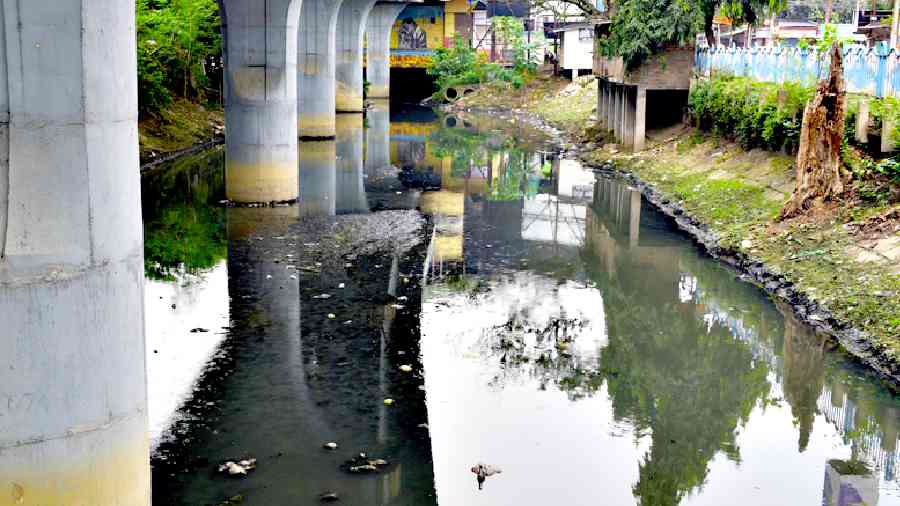More than 20 per cent of the state’s untreated sewage that flows into rivers and pollutes them is from the Kolkata municipal area alone, according to data shared by the state government and civic officials.
In absolute terms, 311 million litres of untreated sewage are discharged into the Hooghly, Tolly’s Nullah and other canals in Kolkata every day.
The National Green Tribunal (NGT) had on Saturday ordered the state government to keep aside Rs 3,500 crore in an account and spend it only on solid and liquid waste treatment after it found the state lacking in environmental protection measures.
The NGT had said in its order that 1,490 million litres of sewage remain untreated in the state every day. The sewage includes the wastewater generated by households and industrial effluents.
“The volume of untreated sewage from the Kolkata municipal area is 311 million litres a day,” said an official of the Kolkata Municipal Corporation (KMC).
Kolkata generates about 1,400 million litres of liquid waste a day.
The five sewage treatment plants can together treat 179 million litres and the East Kolkata Wetlands treats 910 million litres every day naturally, said the KMC official.
The NGT has also fixed Rs 2 crore as compensation for every 1 million litre of untreated sewage. Which means the compensation from Kolkata alone stands at Rs 622 crore.
“The worry about untreated sewage was that it makes river water so polluted that it becomes a public health hazard for people who depend on it. The coliform bacteria that can flow into the river from the septic tank of a household can cause diarrhoea,” said a former engineer of the KMC’s sewerage and drainage department.
“Untreated sewage also reduces the dissolved oxygen level in the water, which affects aquatic beings like fish and a variety of microorganisms.”
KMC officials spoke about a host of reasons for the huge gap between the generation and treatment of sewage.
They include huge costs of building sewage treatment plants, challenges like diverting old sewer lines to a newly built sewage treatment plant, difficulty in getting land in an ideal location and lack of willingness of the government to act.
“The areas along the banks of the Tolly’s Nullah, especially the northern side, discharge a high volume of sewage into the canal. The Tolly’s Nullah eventually merges with the Hooghly,” said the former engineer.
A huge volume of untreated sewage emanates from Kasba, Jadavpur, Behala and Tollygunge.
A KMC official said the volume of untreated sewage would come down once a number of projects that are in the pipeline become operational.
